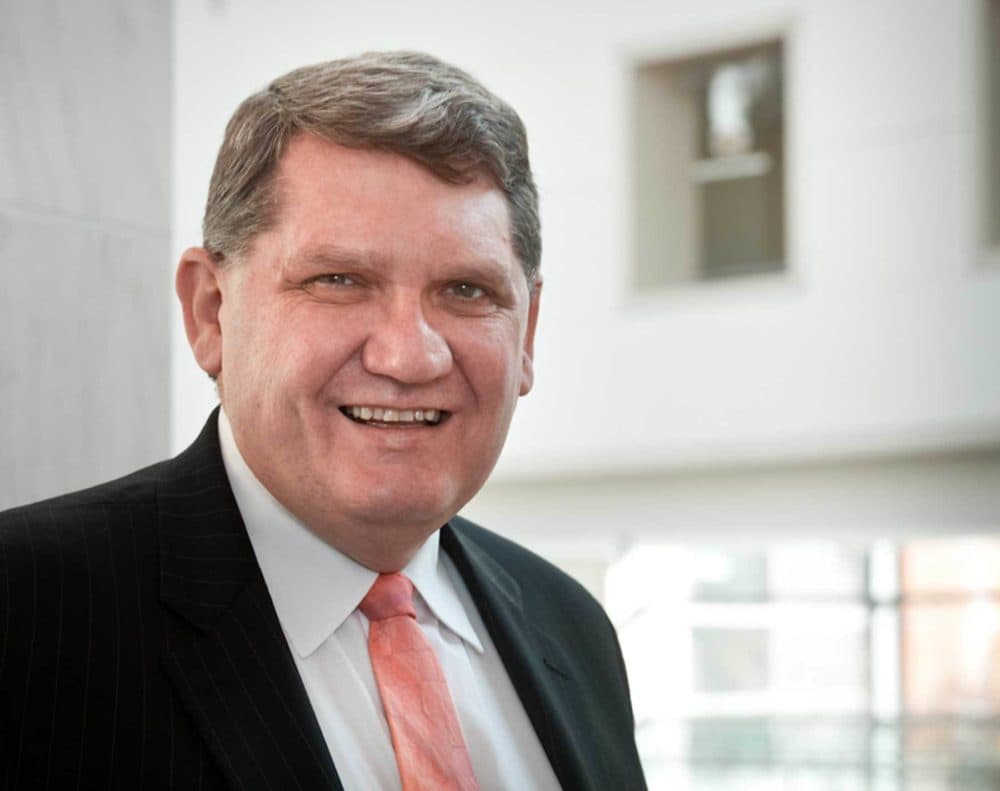Advertisement
Peabody Essex Museum Director Dan Monroe Will Retire After 25 Years

After 25 years at the helm, Peabody Essex Museum director and CEO Dan Monroe is announcing his retirement.
Monroe has led the PEM since the 1992 merger of Peabody Museum of Salem and the Essex Institute.
“The idea was to take these two museums ... and to create a new kind of art museum,” he said looking back, “one that integrates art and culture and creative expression in new ways.”
This, he said, required a wholesale transformation of virtually everything — identity, programs and finances. “The degree to which we've been able to achieve what we have is just far exceeds anything that I possibly imagined at the start," Monroe said.
When he first took the job, his operating budget was $3 million — now it’s $33 million. The endowment grew from $23 million to $500 million. Attendance has risen from 60,000 visitors a year to more than 270,000, according to the museum. Over his tenure Monroe has helped to raise more than $800 million with an eye on transforming the historic institution.
Monroe is particularly proud of the partnerships PEM has nurtured to share exhibitions internationally with institutions like the National Gallery in Washington D.C., the Palace Museum in China, and London's Victoria and Albert Museum.
PEM Board of Trustees president Robert N. Shapiro called Monroe a “pathbreaker” who created “an entirely new kind of art museum.”
“He has poured his heart, passion and talent into transforming PEM into the international force that it is today,” Shapiro said in a statement. “Dan is a remarkable thinker, leader and builder. PEM plays a major leadership role because of his work, imagination and drive.”
In 2010 Monroe, who’s worked with indigenous tribes in Alaska, was instrumental in the creation of NAGPRA, the Native American Graves Protection and Repatriation Act. At the museum he fought to make sure artifacts once held by the Andover Newton Theological School would comply with this federal law that returns sacred cultural objects to their original tribes.
“I personally had the great privilege to participate in writing that law and helping oversee it,” he said. “We believe that museums have a responsibility not only to care for their collections — but in the case of Native American art — to help support and preserve and develop Native American cultures. And so it's something we've been honored to participate in and take a lead in helping make happen here but the nation will have to continue following that.”
Monroe has been a vocal critic of the Berkshire Museum’s highly controversial decision to sell a number of its artworks.
When asked about other accomplishments he is proud of, Monroe pointed to the new Collection Center in Rowley. The decision to move the historic Phillips Library collection out of Salem where it was originally house fueled an uproar and Monroe has been the target of emotional criticisms by historians and researchers. The library is comprised of rare manuscripts and documents that capture Salem’s history, including the Salem Witch Trial records.
Those against the move said Salem’s history should stay in Salem. Monroe and the museum believe the collection will be preserved at much higher standards in Rowley.
When asked if he would have done anything differently during his time, Monroe said, “I have certainly no regrets, it’s simply been incredible joy, privilege and honor to have had the chance to do this kind of institution building, which is what I have above all loved most.”
He predicts it will be bittersweet to hang up his hat next year, as PEM opens a new 40,000-square-foot wing.
An international search for Monroe’s replacement has begun. He has faith all of the fundraising, education and public programs that he helped shepherd will be carried forward when he’s gone.
As for what’s next for the Colorado-born Monroe, he and his wife will buy a house back West in Santa Fe. He’ll likely consult and do some writing — as well as hit the rapids. He bought a raft this summer and has been testing the waters.
“What I won't be doing — unless something untoward happens — is sort of sitting back and taking it easy,” Monroe said, adding he is definitely not a big golf player. “So whatever it is, it's not going to be those two things.”
